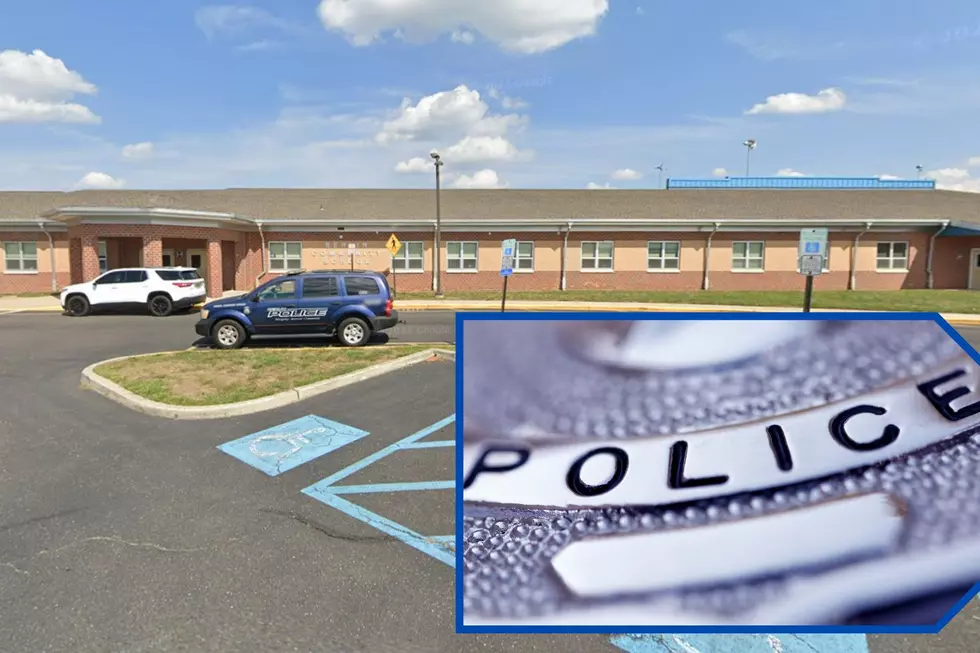
NJ Sees Success in Fighting Steroids in Schools
Bigger. Stronger. Faster.
In a sports world where athletes want to get as much of an edge on the competition as possible, the use of steroids is a relatively quick fix. Despite a wide range of side effects -- severe acne, liver disease, infertility and even death among the long list of dangers -- many have ignored the warning signs and decided to take a walk down that path.
While professional and college athletes were usually the ones in the spotlight, steroid use has trickled down to high school student-athletes. No longer are teenagers immune to the situation, acquiring the lethal product with little difficulty.
"We would be naJive to think in this day and age that this type of activity isn't going on more and more -- the pressure on kids, parents wanting to see their kids gets scholarships, the pressures of AAU ball," said Mike Gatley, president of the Cape-Atlantic League and athletic director at Mainland High School. "We'd be naJive to think kids aren't potentially contemplating it or using things to get better."
"When my kids were (teenagers), I asked them about steroids," state Sen. Richard Codey, D-Essex, said. "They said they could just go to the city (New York) or on the Internet. It was easy as pie. ... "Where did they learn this? From kids in school."
During his term as governor, Codey pushed hard for the testing of student-athletes. He created a task force to investigate the situation in 2005 and, in conjunction with the Department of Education, the New Jersey State Interscholastic Athletic Association developed a program and began random testing of individuals and teams competing in state championships starting in the fall of 2006.
New Jersey was the first state to require this of its student-athletes. Illinois and Texas are the only states to follow suit.
"Looking back at the time that I did it, steroids had become a very big topic within the public's mind. There were lots of stories, stories of kids dying," Codey said. "Do we need to do this? We win whether we have none or five (positive tests)."
Now in its sixth year, the program has proved to be a major success in the eyes of NJSIAA Executive Director Steve Timko and educators across the state. While improvements -- such as additional testing throughout the season -- have been discussed and continue to be investigated, the policy has been a major deterrent and served the state well.
"Unfortunately, there is a problem out there," said Mike McAleer, Pitman athletic director and Tri-County Conference president. "Anything you can do that makes a kid think twice about it is a positive. It's more than fair."
"For me, it's not about catching the kids. It's about making the playing field level and keeping the kids safe," said Dave Ryden, supervisor of extracurricular activities at Marlboro and president of the Shore Conference. "That's why we do it. The reason the NJSIAA put these policies in was to protect the kids. If you save one kid, great. If you have zero taking steroids, that's even better."
Timko echoed those sentiments.
"If we can save just one kid from going off the deep end or from further damage through our testing policy then I think the program is truly a success."
The NJSIAA tests 500 student-athletes per school year at a cost of $200 per test. The governing body receives $50,000 per year from the state, with the remaining $50,000 coming out of the NJSIAA budget.
According to Timko, there were four positive tests last year and at least eight over the first four years of the policy.
More than 2,500 student-athletes have been tested so far, which includes those tested during the recent fall championship season. Sixty percent of all tests are from football, wrestling, track and field, swimming, lacrosse and baseball. The National Center for Drug Free Sport Inc. administers the tests and the UCLA Olympic Analytical Laboratory tests the urine samples. The NJSIAA policy does not allow for blood tests.
The NJSIAA has a list of four banned-drug classes -- stimulants, anabolic steroids, diuretics, and peptide hormones & analogues. The list is patterned after the NCAA's list of banned substances and contains the same types of substances that are banned by the International Olympic Committee and the World Anti-Doping Agency.
The penalty for violating the policy is the immediate loss of eligibility for one year from the date of the test. Eligibility can be restored only after counseling and the production of a negative test result.
Every student-athlete is required to sign a consent form. If they choose not to, then that person is not eligible to participate. It's considered a violation of the NJSIAA's sportsmanship rule for any student-athlete to possess, ingest or otherwise use any substance on the list of banned substances without a written prescription by a fully licensed physician to treat a medical condition.
"(The form) in itself is a deterrent for some student-athletes experimenting with any type of steroid," Timko said. "Kids need a deterrent, especially kids on the bubble," Hillsborough athletic director Michael Fanizzi said. "You're going to have kids who will never do it and kids who will always look at it. It's those kids in the middle that you hope a deterrent will help. I don't look at it as punishing a kid. I look at it as being able to save a kid. If we can save a kid, it's more than worth it."
Codey would like to see the state move toward testing throughout the season.
"We might find more," he said.
He's not alone. Timko said the NJSIAA would like to have a broader range and test some at the beginning of the season as well as during championships.
"We should be testing more than just 500," Timko said. "I don't know the magic number, but it should be more than 500. There are some teams that know they won't make the state playoffs and there's the possibility of abuse taking place.
"When you look at the fact that there are 256,000 student-athletes and we only test 500, and there were four positive tests . If you do the math, you can see the number is significant and something needs to continue."
It ultimately comes down to dollars and cents. "If we have to spend a little bit of money to keep kids from doing it, it would be money well spent in my book," Ryden said.
"It's an astronomical cost and I understand the rationale why they don't. But when you have a team that's not in a state final, it's a deterrent but not a harsh enough one."
Noted Fanizzi: "Personally, I'd like to see more testing. Everything is cost prohibitive, but more testing would be better off. We need more of a deterrent."
Timko has looked into getting professional sports teams from the region involved in the process. So far, he's come up empty.
"We're looking at different avenues," he said. "I've written to a number of professional organizations unsuccessfully. "You look at where New Jersey is located and the amount of professional teams surrounding the state. Our steroid testing policy would be ideal for a pro team to support because we're trying to deter (high school student-athletes) from experimenting."
Since the steroid policy went into effect, it's been able to weed out a few cheaters and deter many, many more from experimenting.
And while enough people believe it needs some tweaking, the consensus is that it's a policy well worth spending as much money on as needed.
"It's tough to test everybody, but they are being proactive and the kids know it," McAleer said.
Said Codey: "There will be a time sometime in the future when every school will adopt it, when a school can test my son at any point in time they want and will have our permission. It will have nothing to do with sports."
(Copyright 2012 by The Associated Press. All Rights Reserved.)
More From New Jersey 101.5 FM









